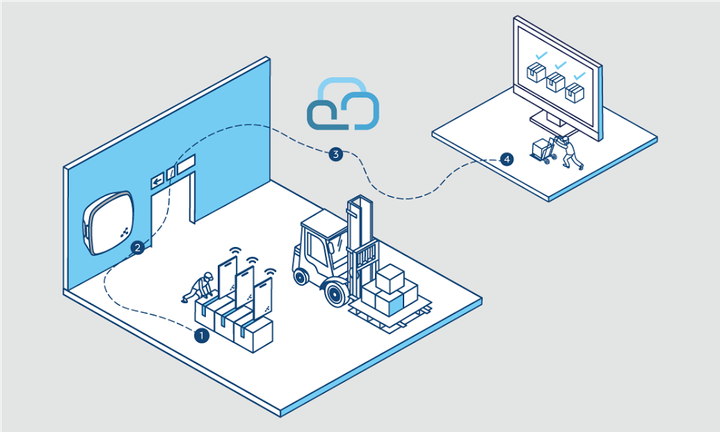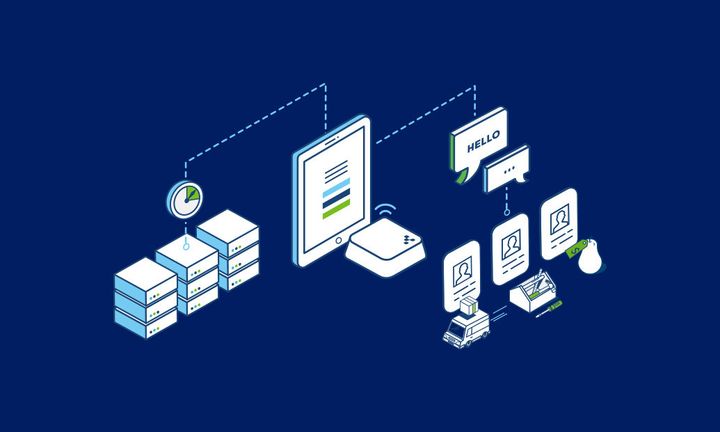One of the most impactful results of the Internet of Things revolution will be industrial IoT. Industry is about to transform completely, and it will affect consumers, business, and entire markets. But there are several hurdles we have to overcome in order to get there.
IoT isn’t about digitizing everything. It’s about interoperability and making different platforms talk to one another. It’s about making the physical and digital work in unison. The question is, then, how do we bridge the offline and online?
Next generation solutions do not work in a vacuum. They are part of Industry 5.0, the meshing of human and machine workforces, and they represent an entirely new kind of labor. Here’s why beacons are the posterchild for Industry 5.0.

Beacons’ greatest role: translator
Bluetooth beacons are still misunderstood. We think of them as marketing and retail tools, but I cannot believe pushing ads is their most important use. I see them instead as master translators. Beacons turn movement directly into data and data into reality. There’s no need to export, import, analyze. Everything within a building, from people to computers to heavy machinery, can simply speak the same language.
Industrial IoT is powered by Bluetooth
Industry is still struggling to find a medium-range standard. WiFi, UWB, and Zigbee have made important contributions, but, as standalone technologies, they will never be able to fuel an integrated and automated IoT.
Bluetooth, on the other hand, is only getting better. It has a robust existing ecosystem and offers numerous, varied use cases. You may start out using BLE to just track assets. Then you start tracking employees, the environment. For the very first time, a single infrastructure can be comprised of thin, light layers of interaction, all under one tech infrastructure.
Everyone is working with BLE, and that will marshal in more unexpected solutions. This is precisely why Industrial IoT about to reach critical mass.

Beacons made a huge pivot in 2016
The original beacon was all about interacting with smart devices. But beacons shouldn’t rely on human interaction. They must generate value by themselves. The most innovative beacons will push data to the cloud on their own, no interaction needed. That technology now exists.
These beacons will lead to the field’s most drastic development yet: the lifting of the screen between user and technology. The evolution from computer screen to touchpad changed how we view technology, and devices like the Kontakt.io Gateway will do that on an industrial level. They allow the physical and digital to work together, no barriers.
And there is still more to come. Better sensors will allow beacons to function more effectively. Further granulation will make parts smaller, better, and more affordable. It is only a matter of time before beacons move far beyond our current use cases.
We need the right data, and we need fog computing
Every business needs data, but trying to gather every ounce of it is akin to counting every single breath every single day. You can do it, but it’s overwhelming. It’s a waste of resources. I don’t need, or want, data on every single breath. I want to know when something changes. Useful information lies in knowing when the production line is choked or when something unusual happens.
Industry will move away from just the all-encompassing Big Data and focus on useful, local data.
As the focus shifts to local data, fog computing will prove crucial. Yes, data can be sent off to the cloud, analyzed by data scientists, and stored in silos, but daily operations need fog computing. Those with skills in fog computing will find themselves increasingly more valuable in coming years.

There will be surprises
Connected infrastructures are becoming increasingly common. Companies are about to be faced with a very real decision: adapt or wait. Industrial IoT and beacons will one day be a staple in operators’ toolkits. The question is who will be first, and how will they shape the future of industry. That’s where things get interesting.
